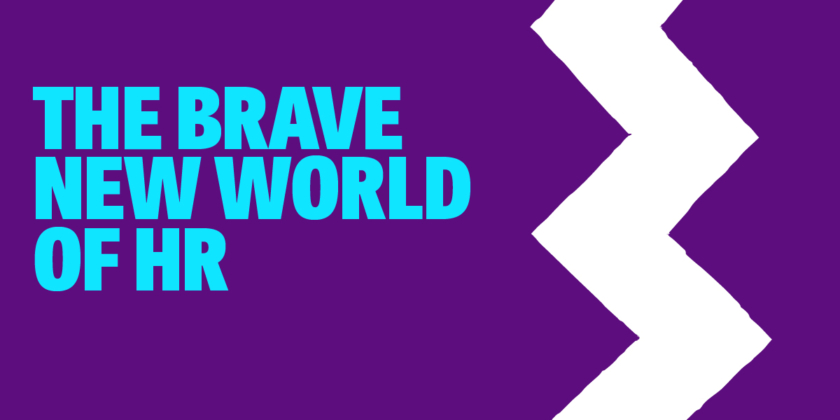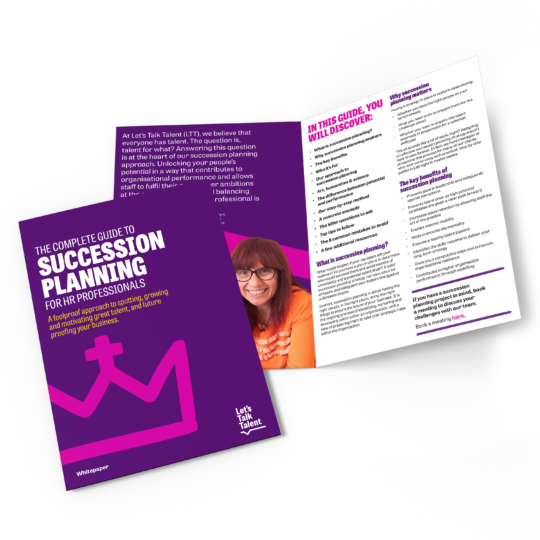The Power of Pre-Life and Why Traditional HR is Dead
The HR ecosystem has changed massively over the last 10 years. The days of long-term, single-employer careers are now over and the project-based gig economy has arrived. In this brave new world, Millenials can expect to work in around 16 roles across multiple organisations and the present expectation is for longer working hours over more years, with little sign of retirement! Gen Z is set to be the first digital-since-birth generation to hit the workplace and are expecting to find ways to realise their entrepreneurial potential whilst bringing meaning and purpose to their working life. Get ready for change.
As a result of these changes, traditional HR models and processes are dead. People aren’t interested in procedures and hierarchical management structures that limit potential. They don’t want annual performance reviews. They’re interested in what the experience will be like and don’t want to be viewed as ‘productive units’. They want autonomy, they think agilely and seek ownership as much as reward. They’re your (very canny) consumers and their experience at work is the product.
Pre-life is Paramount, But What Exactly Is It?
Recruitment is much more nuanced than it was. Pre-life is really about recognising that the process starts before interviews, applications and advertising vacancies. It’s about getting your house in order in a deliberate effort to attract the right talent to your organisation. See this diagram which shows you how we work with organisations.
In this article, we pull out some of the most important Pre-life considerations for your organisation and show you the way to attract the brightest and most innovative people to welcome onboard.
Culture should really mean something
It’s been reported that many board members struggle to really keep up with the culture within their own companies. My own experience has often reflected this and although in part this is a sign that they struggle to keep up with all the data from employee engagement surveys, it’s also indicative of an old-school approach that’s based on outdated thinking. It’s not all about the numbers on a spreadsheet or creating a plan for the next year. That’s very short-term thinking. Companies that thrive are agile, alert and foster talent that allows them to innovate and bring fresh insights on-board.
A culture that is in touch with the needs of prospective talent is imperative and one where it’s not just an HR departments job to attract talent is also likely to be successful. We need input from more than one team – IT, comms, marketing and operations all have a role to play. The future of work is owned by everyone, not just HR. The 20th century model of HR processes, set up using the Ulrich model is completely redundant now – we need to adopt a more agile, lab-mentality.
Consider also using talent scouts within your business to amplify your reach. Recruitment is now about business development and marketing skillfully. Working with internal scouts can be a great way to reach high-quality candidates other channels are not reaching.
We’re now in the age of AI, recruitment chatbots, special technology for video interviews (see this list), instant ability to collaborate, global connectivity and workplaces that are always more fluid than static. In the UK we’re facing a tendency to become insular and risk-averse (in the face of Brexit), so we need to overcome our fears and embrace change more proactively if we are to attract talent both from within and outside the UK.
Seeing Things From Their Perspective
Understanding what the perception is of your company from the outside really matters. Your published reputation, social media accounts, news stories and website all matter. Each signal sent out into the world creates a picture that prospective talent will be using to judge you against other employees. You’re just one in a list.
It’s worth having some kind of review of common perceptions of your brand. Glassdoor and other review platforms can be a great learning curve for HR departments as well as confirming what you are doing well. Brand strength analysis or even sentiment analysis is something you marketing department should also be doing – and that data is likely to contain insights useful to HR people.
It’s also worth noting that 74% of millennial age employees want meaning in their work. Many are not finding it. To stand out you need to provide meaning and purpose and communicate it perfectly to prospective employees.
Seeing Prospective Employees as Potential Consumers
This idea of employees as consumers is important – as it reflects the reality that your employees are in fact concerned primarily with their lived experience at work. It’s not just the advancement of their status and paycheck that matters – it’s their entire experience of being part of your organisation.
Moment by moment, today’s employees are deciding whether to join, stay or go. When it comes to talent it’s a jobseekers market and organisations need to impress by making things personal, authentic and responsive – both online and offline.
Stay In Touch (For Years)
Attracting talent isn’t just about marketing your vacancies and then hiring the right person. Often the best people won’t be moving on just yet and even if they are it might still take a while to attract them. Companies such as Google invite prospects and even number-two candidates to events over a period of years. They court their talent pool over time – establishing a relationship with them long before they come onboard.
Why Would They Come To You Anyway?
In today’s job marketplace, candidates may be judging you against five or six other companies. In the new consumer-led job market you need to ensure your ‘product’ is up to scratch, stands out from the crowd and is experienced focussed as much as it’s focused on training and development, salaries and benefits.
During my own career, I’ve helped large organisations really nail this. The reason why candidates wanted to work for Talk Talk as opposed to O2, for example, was all based on us conveying the experience of the journey skillfully to prospective employees. Establishing the right culture where consumer experience is paramount for employees is hard and successfully communicating that to job seekers is another skill in itself. But, if you don’t sell the overall experience to candidates and focus just on pay and conditions you won’t attract talent. It’s much more subtle than that. You need to create a clear picture of what it’s like to work within your organisation.
Our in-house experience at Let Talk Talent has taught us five main things about Pre-life:
- If the experience at your company is consumer-led then your culture will attract exceptional people.
- If you fail to convey this to candidates well they will go elsewhere.
- The consumer experience needs to be highly visible.
- Candidates do their research, you need to measure up to their expectations.
Companies that stay in touch with their talent pool over a period of years attract the best employees.
The simple solution? Personalise the journey. Convey to them that their role is part of making your company a great place to work. Let them know how they can shape things and that it’s not led just by procedures and policies. Understand that integrity and even warmth are key parts of the pre-life process.
Bravery, Brilliance and Boldness
During my time at TalkTalk and Channel 4 all the programmes I delivered embody these principles and added to the growth of the business both financially and culturally. The mindset, emotional connection, collaborative culture and organisational effectiveness I was able to instil there helped position TalkTalk as a great place to work – making it highly attractive to talent.
In many ways, this is what our current consumer methodology is based on – appealing on all levels. Your organisation may depend on multiple generations from Baby Boomers, Generation Xs, Millennials and the soon-to-arrive Generation Zs. They all think slightly differently and have different expectations – but the Pre-life experience you show them is still crucial and will dictate outcomes for your talent acquisition strategies.
Assessing how you are doing amongst your applicants is also really important and there are a number of tools available such as Top 100 and GPTW. These can give a rather one-dimensional response, so if you have a more effective method, let me know I’d be keen to hear how you best obtain such important insight!
To summarise I would say the key thing for HR people to focus on is what the consumer-grade experience for your people will be. Nail that and your organisation will succeed in attracting the best people.
Jo

